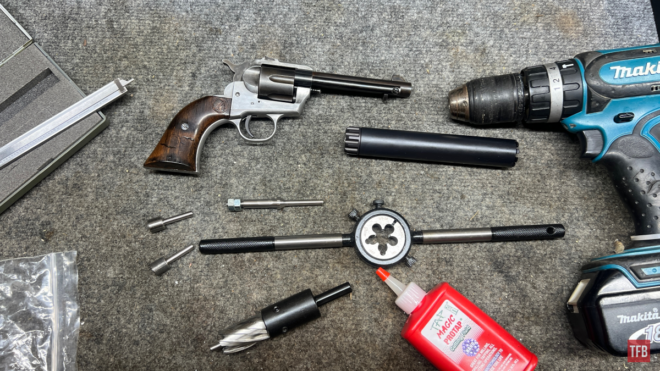Welcome everyone to the TFB Armorer’s Bench! As mentioned in the little blurb below, this series will focus on a lot of home armorer and gunsmith activities. In this article, I am going to relay my experience threading a barrel without a lathe. More specifically threading one using a combination of tools like an annular cutter and die with pilots. A while back I wrote an article about Silencer Central’s barrel threading service. In that, I mentioned I could do that in my home shop (which unfortunately lacks machinery). There was quite a bit of talk about how someone could do that and if it would work well. Having known about it but never done it this way, I figured I would give it a shot. Let’s dive into barrel threading without a lathe!
Note: If you are going “Hey! I thought you couldn’t suppress a revolver.” Check out this article here for the reveal.
Related TFB Armorer’s Bench Content:
- TFB Armorer’s Bench: Silencer Central Barrel Threading
- TFB Armorer’s Bench: I Tried to Silicon Carbide a Pistol Grip
- TFB Armorer’s Bench: Rust Bluing The Blunderbuss
- TFB Armorer’s Bench: Cleaning a Silencer Central Banish 45
- TFB Armorer’s Bench: Infante S6 Ultrasonic Cleaner 1-Year Review
TFB Armorer’s Bench: Barrel Threading Without a Lathe
Here, we at TFB hope to inform, entertain, and even inspire any would-be gunsmith or armorer out there. Ideally, with the information I provide and with the help of our sponsors, you can have some useful knowledge about the conservation and improvement of firearms technology while at the same time sharing experiences and teaching each other new tips and tricks along the way in the comments. Digging deep into what it is to be an armorer or gunsmith has significance but what is important is what those people do to show they’ve earned that title. I am happy to share my experiences and knowledge and hope it is informative!
Make your personal safety a priority:
- Practice proper gun safety. Always make sure before the firearm hits your bench that it is unloaded and safe to be handled.
- Wear the proper safety equipment. The main one would be safety glasses (decent ones) since parts are often under spring tension and you may work with high RPM tools. Other honorable mentions would be latex gloves or a respirator when working with potentially harmful solvents and oils. Also hearing protection when working with loud machinery or test-firing firearms.
- Modifications, alterations, and customizations will void your firearm’s warranty 9.5 times out of 10. Please take that into consideration before attempting any at-home gunsmithing.
- If you are unsure about proper safety practices, disassembly procedures, or warranty standards, stop, put down the tools, and consult a competent gunsmith.
Background Info: Barrel Threading Without a Lathe
Okay, so what is a lathe? It may be common knowledge but not all of us have had the pleasure of using one or seeing one in action. A lathe is a turning machine. Imagine a drill press laying horizontally. They knurl, drill, face, and turn down the diameters of round metal (or wood if you have a wood-cutting version). Even small examples are expensive and cheaper ones have many issues that require modification that brings the cost back up. Threading a barrel with a lathe typically will give you perfect or near-perfect concentricity depending on the user and measuring/indicating tools available.
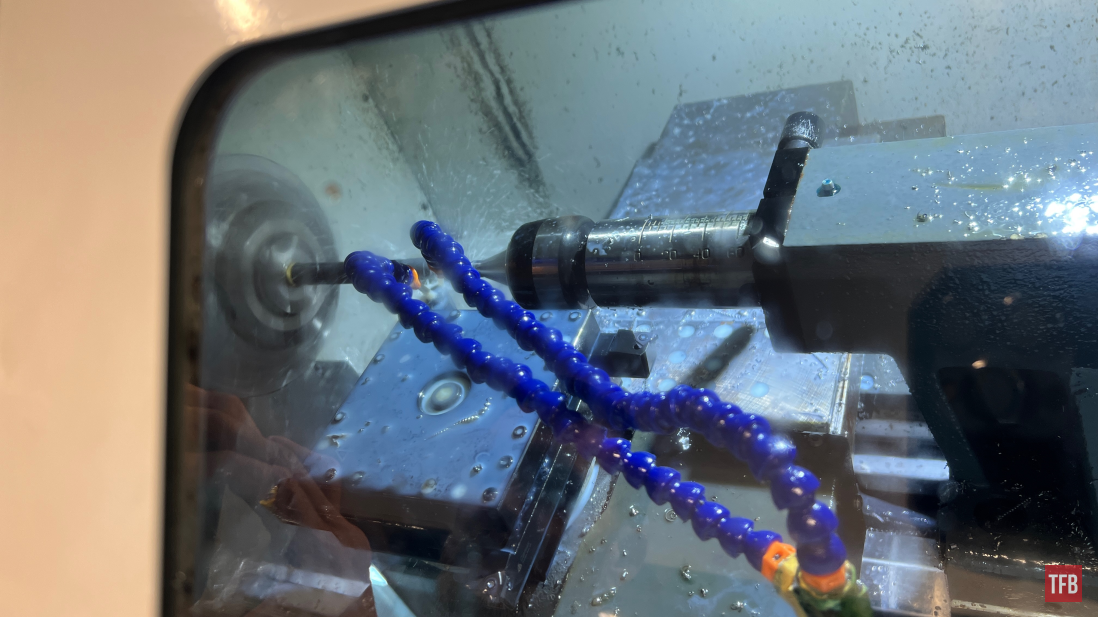
For more info on Silencer Central’s barrel threading service check out this link here.
So how does someone thread a barrel without a lathe? Well, there are companies out there who sell kits or chunks of a kit. These kits include a die to do the threading itself and a pilot to help keep things straight. Anyone who has threaded something with a die knows things are never perfect by hand.
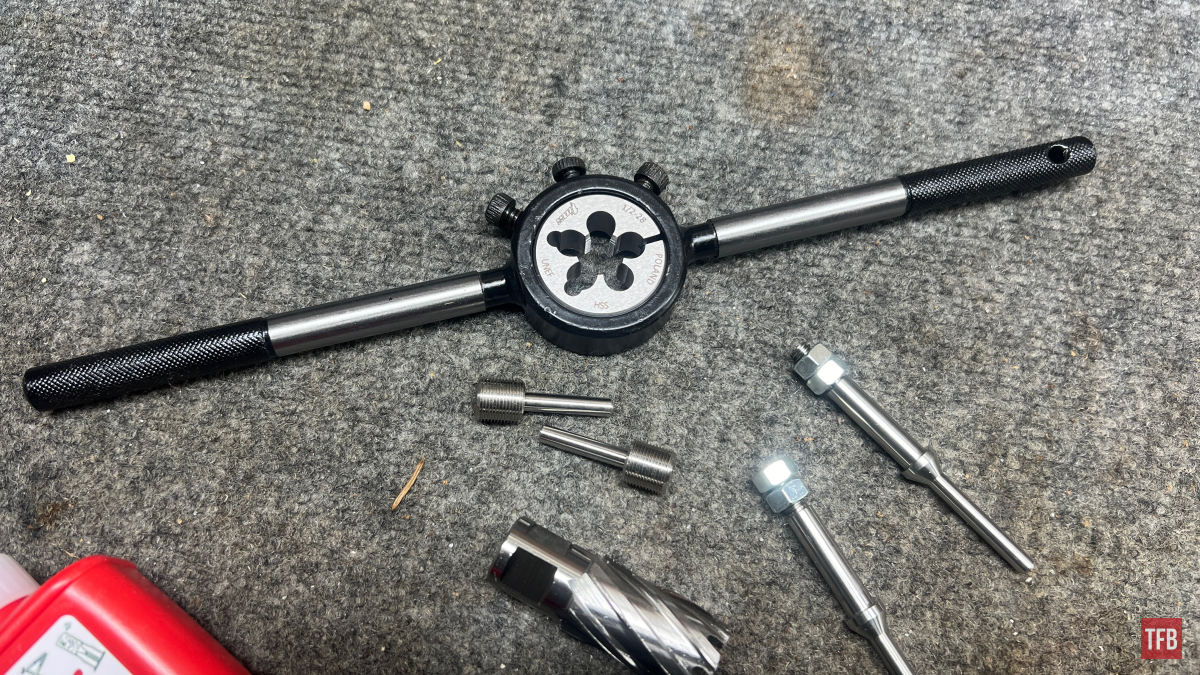
The other half of the kit will be a pilot and annular cutter. An annular cutter is sort of like a large hollow drill bit or a thick-walled hole saw bit. This cutter turns down the diameter of the barrel to whatever it needs to be. In the case of a 22LR barrel, it would be turned down to 1/2″.
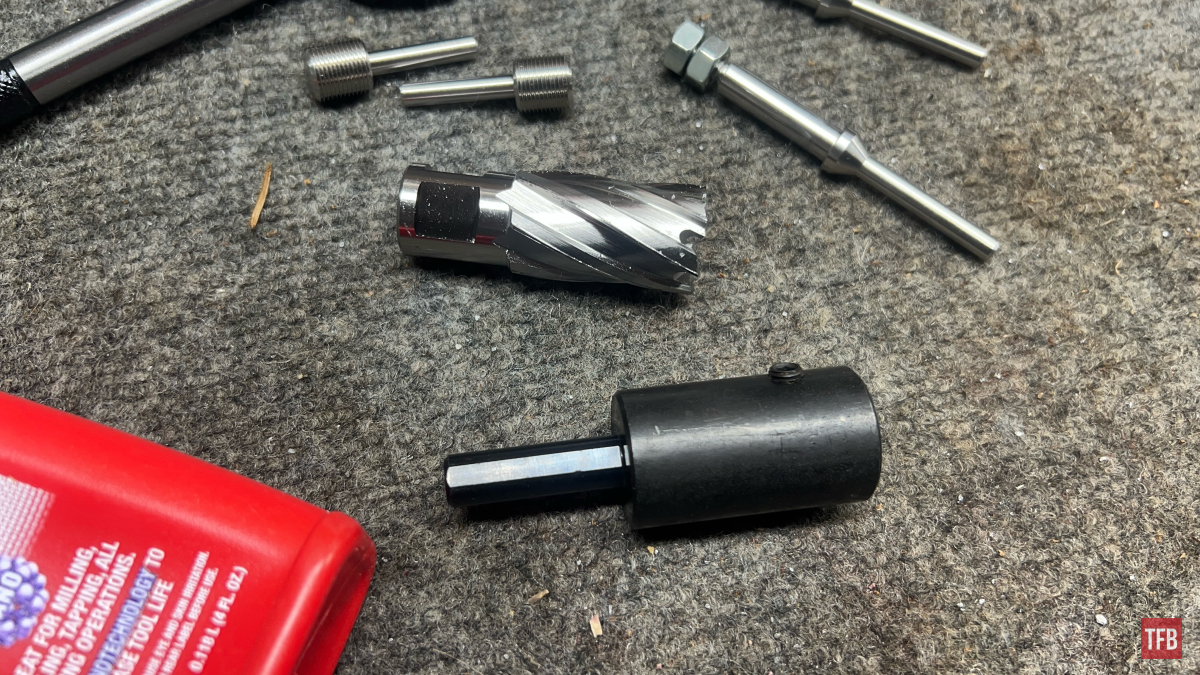
The supplies I used for this article were from Carolina Shooters Supply. I should mention that the die used for threading began to chip, crack, and eventually full-on snap about three uses in. This could have been very well my fault since I went from one barrel to another without adjusting the tension screw on these adjustable dies.
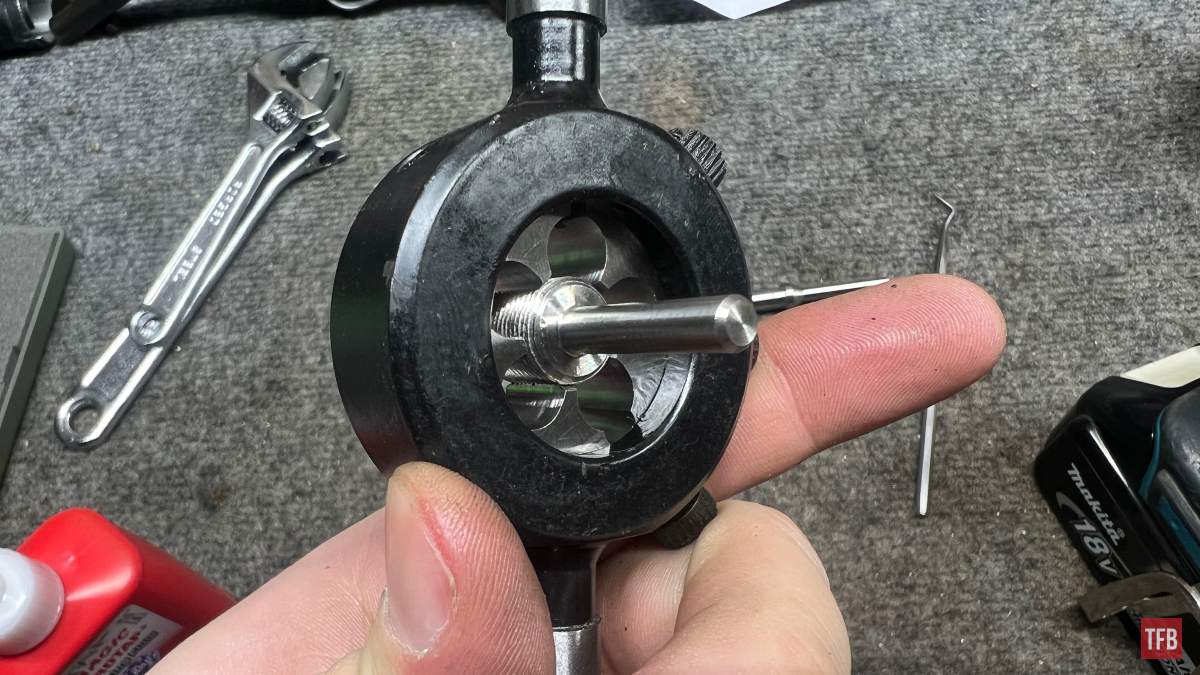
How it Works & If it Works: Barrel Threading Without a Lathe
First, we need to assemble our annular cutter and pilot. This consists of the pilot (there are multiple sizes since 22LR barrels can be over or under-bored), annular cutter, and drill shank which makes it so you can place it in a drill. The pilot is placed inside the annular cutter and is secured with two nuts that lock against each other. The pilot is to be free spinning so it’s important not to screw it such that it is locked in place. The cutter is then placed within the shank and secured by two set screws.
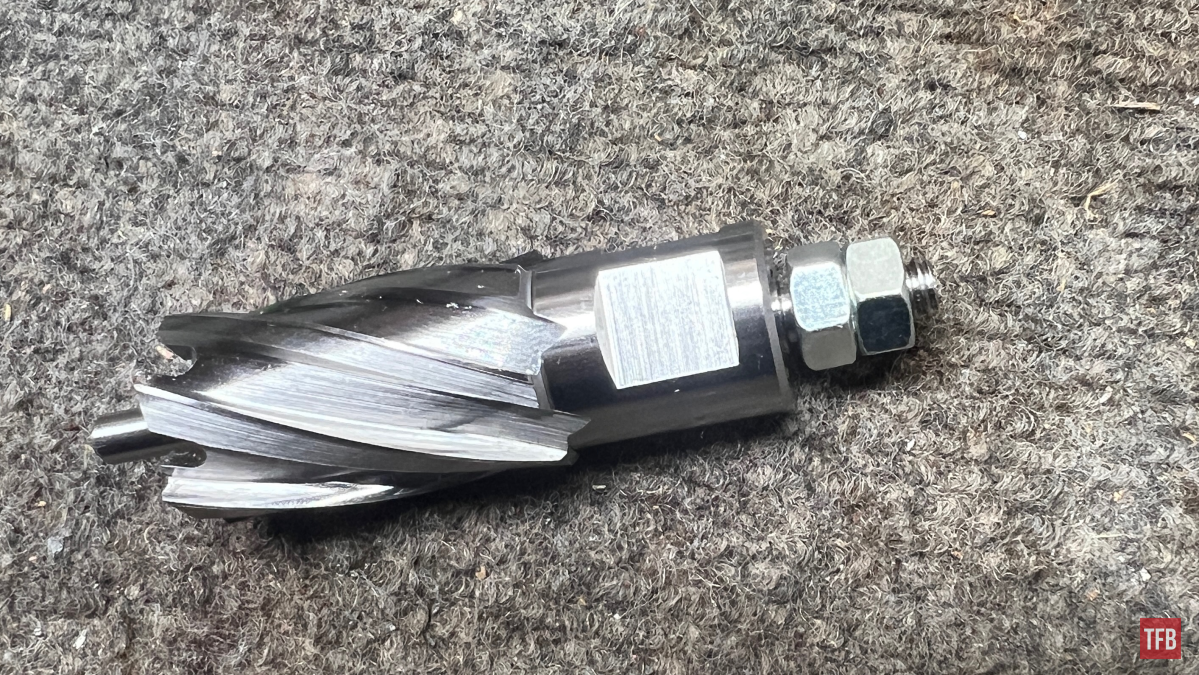
At this point, it can be chucked into a drill and the barrel diameter slowly turned down. All of this is done with slow RPMs, threading/tap oil, and a steady guiding hand (there is still slop to bias in different ways, thus potentially ruining concentricity).
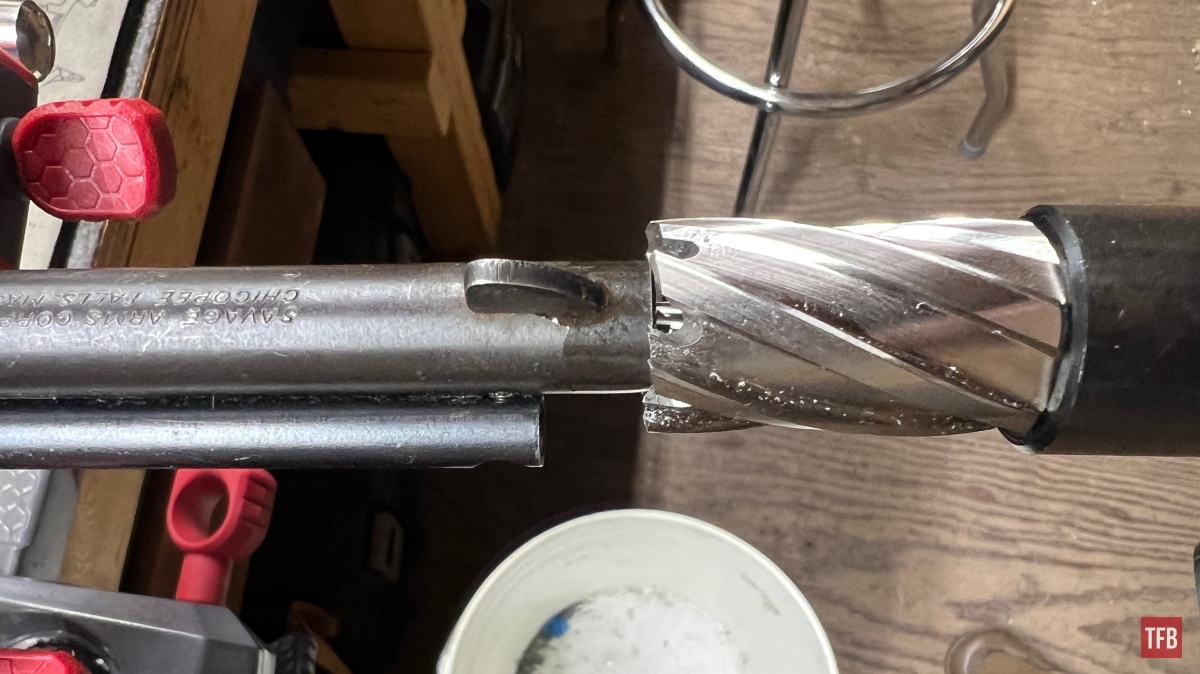
With the barrel diameter turned down for a given length (about 4″ for 22LR), we can start threading. This is the part where things can go very wrong. The die is inserted into the die handle and then the pilot is into the die.
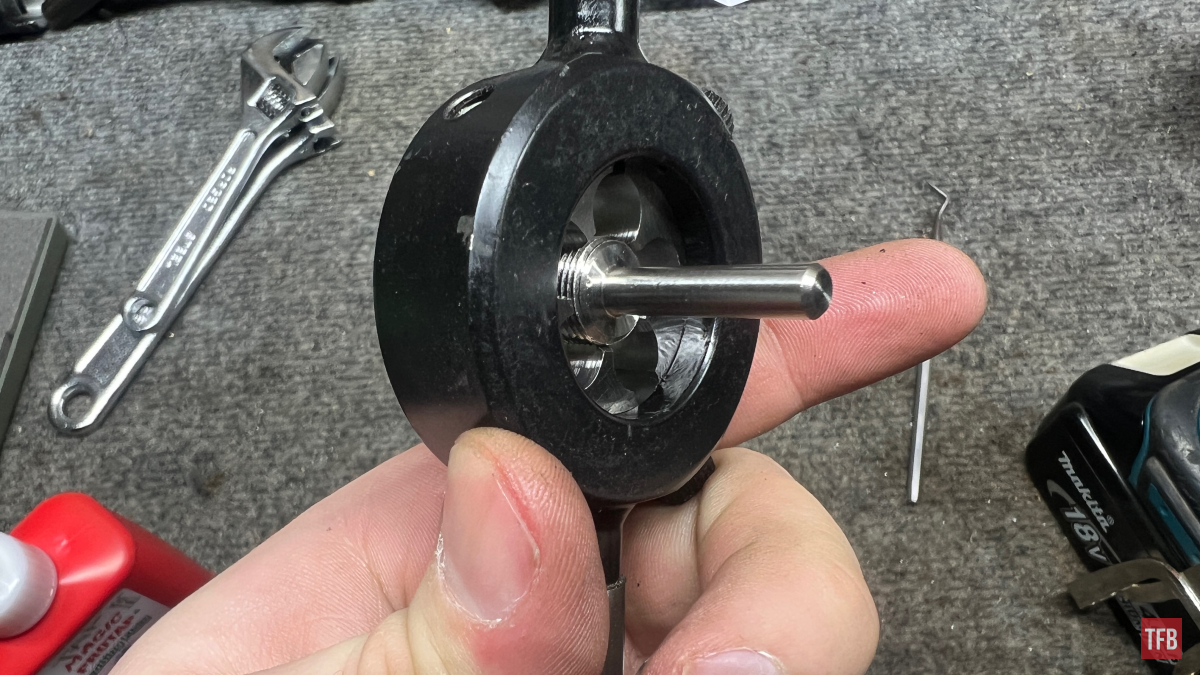
The pilot is there to ensure concentricity and for the most part, it does its job but it is not perfect. When beginning the pilot is inserted such that there are around four threads available to the barrel.
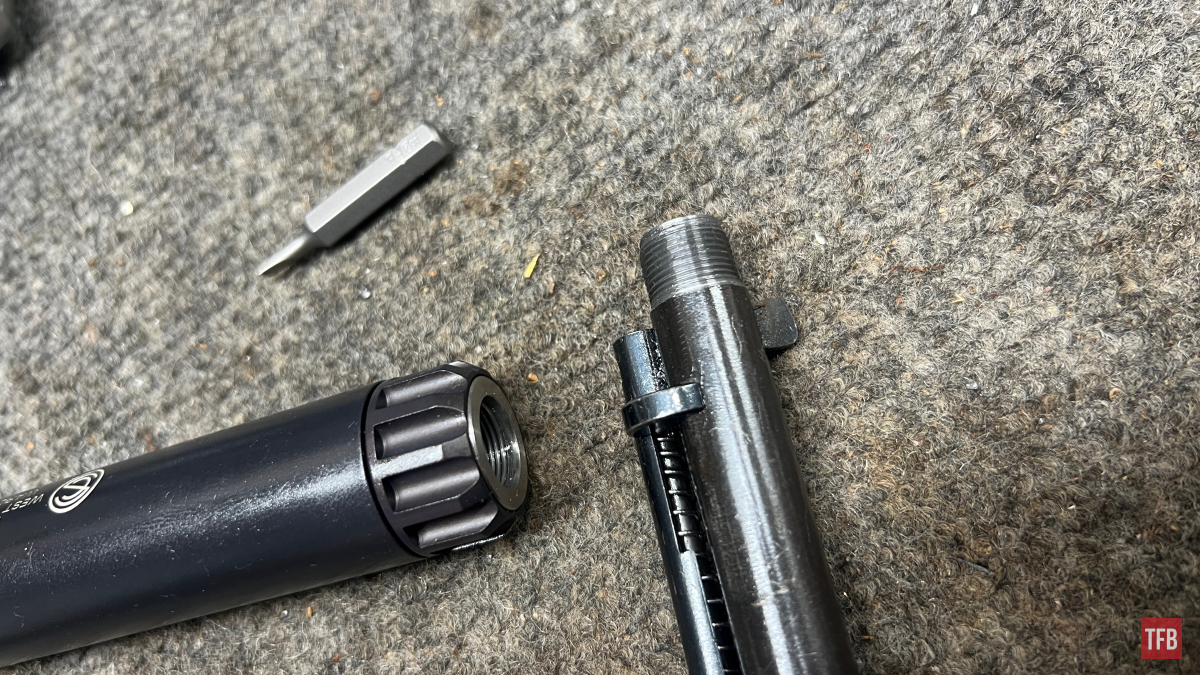
If done slowly and tactfully, things should turn out right. But for most of us, this is a pretty big risk. I tried this out on an old nasty AR7 barrel. It was good practice since I could chop chunks off, cut, and thread them. The AR7 barrel is shrouded by an aluminum alloy so the theading never went favorably. Nonetheless, it was a good test run.
Final Thought: Barrel Threading Without a Lathe
So does it work? Yes, on steel it for sure can work. The Savage 101 single-shot pistol (with its original barrel assembly intact) turned out just fine. It is always smart to check for alignment with a muzzle device. Cleaning rods can be used if they are the right size but true alignment rods are best. Would I recommend someone do this instead of sending a barrel off to say Silencer Central or a gunsmith? No. The risk vs reward here can be too big. The time and money invested comes out to be the same for sending a barrel off and getting a sure thing done. BUT! It can in fact be done.
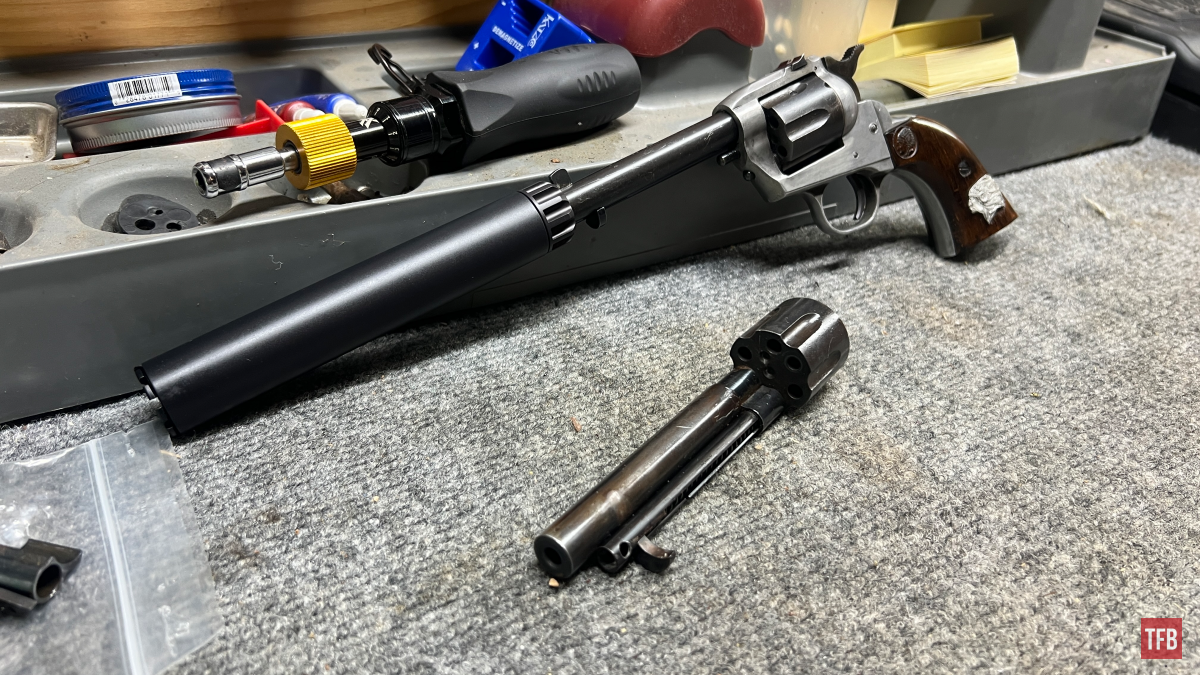
As always, thank you for reading TFB! Be safe out there, have fun while shooting, and we will see you next time for the TFB Armorer’s Bench! Also, let us know what you think in the comments below! We always appreciate your feedback.
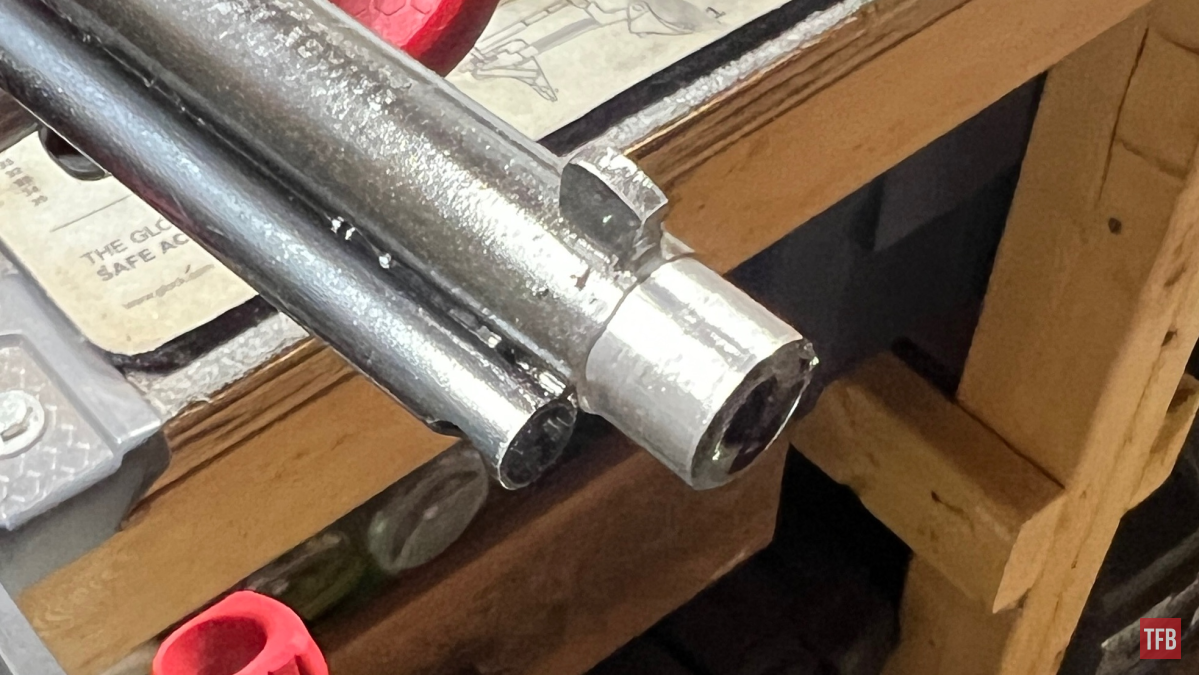
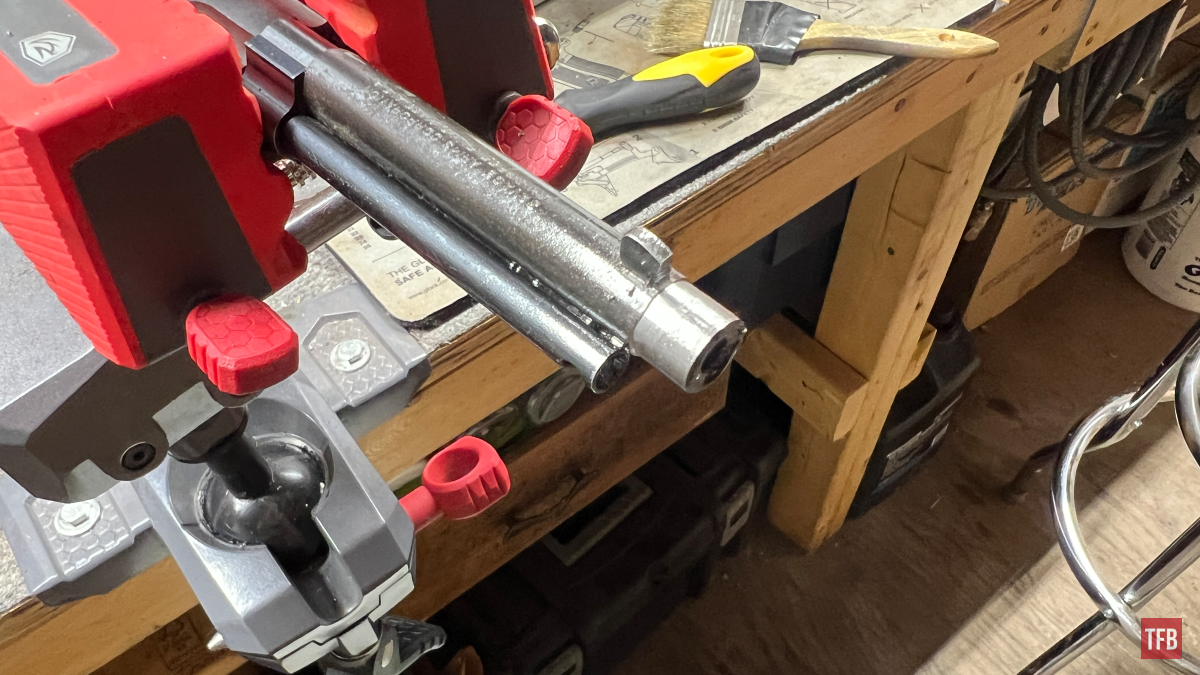
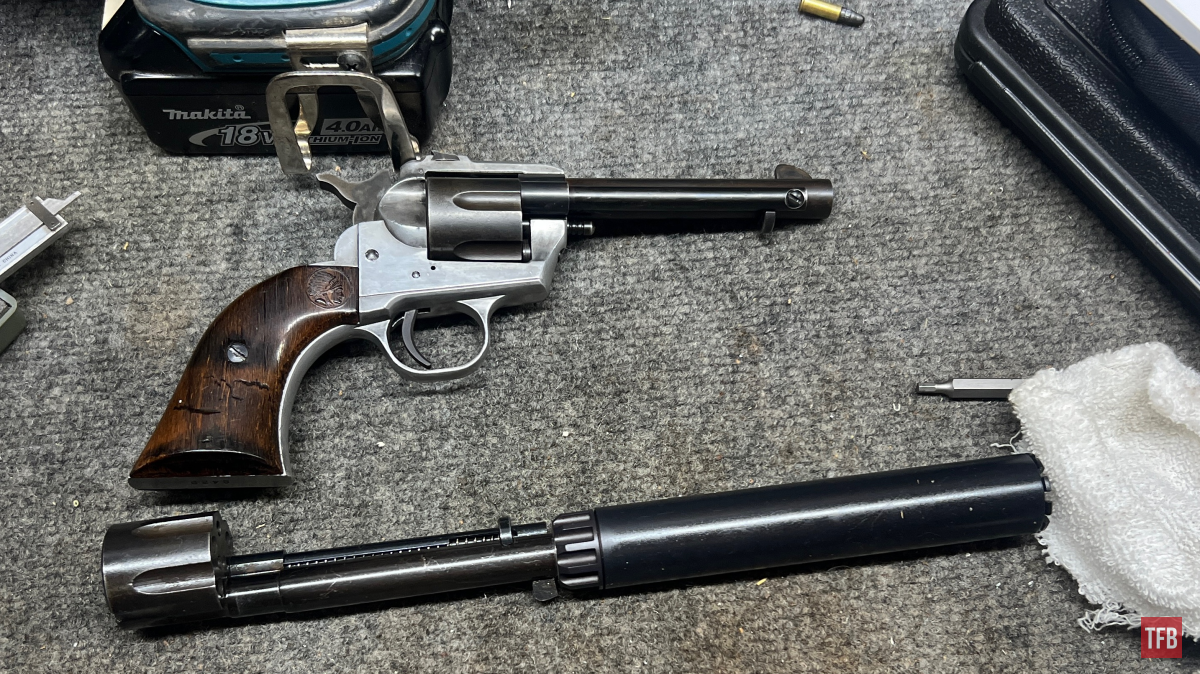
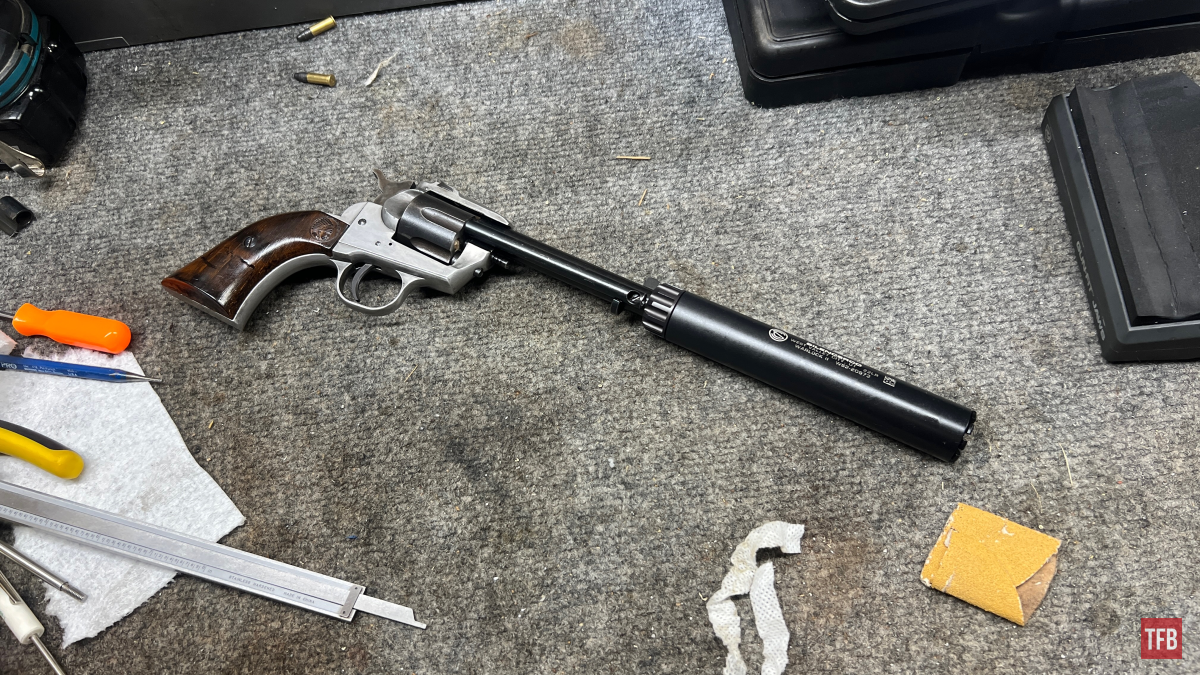
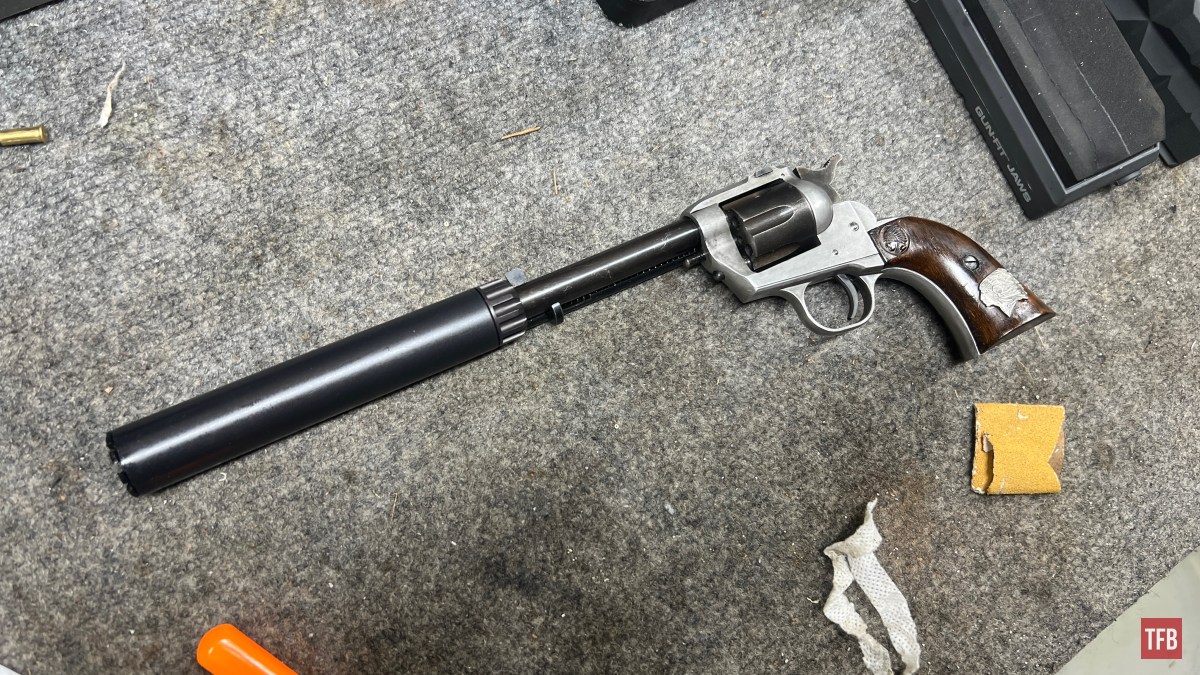
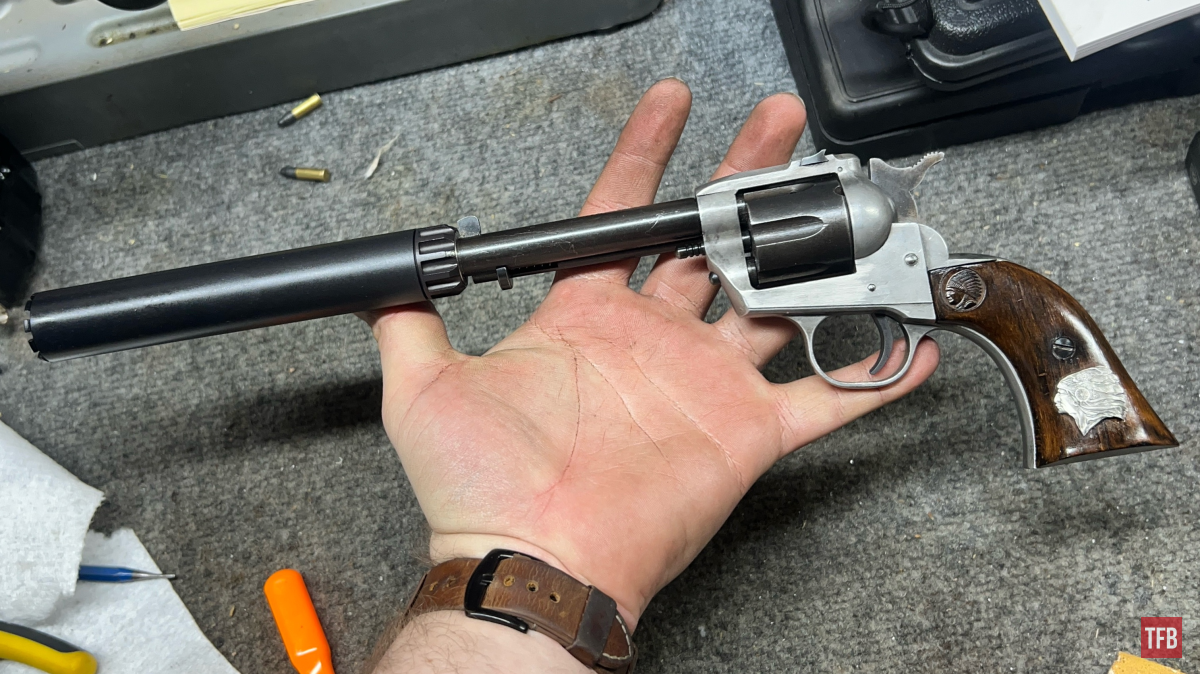
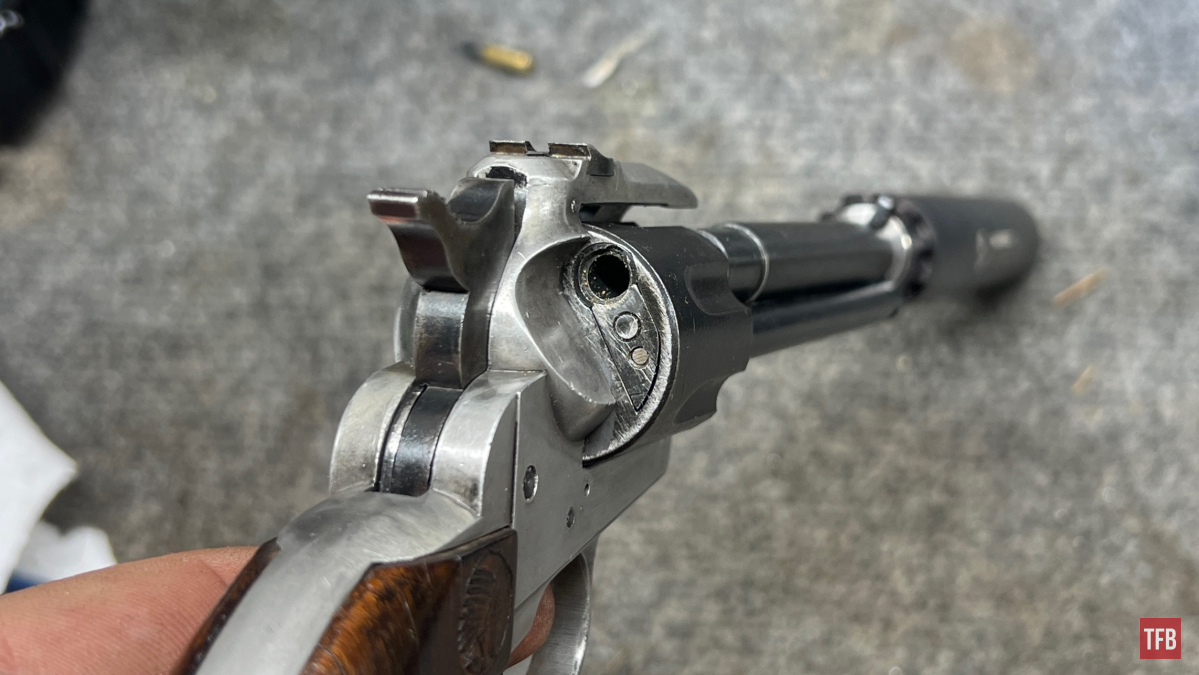
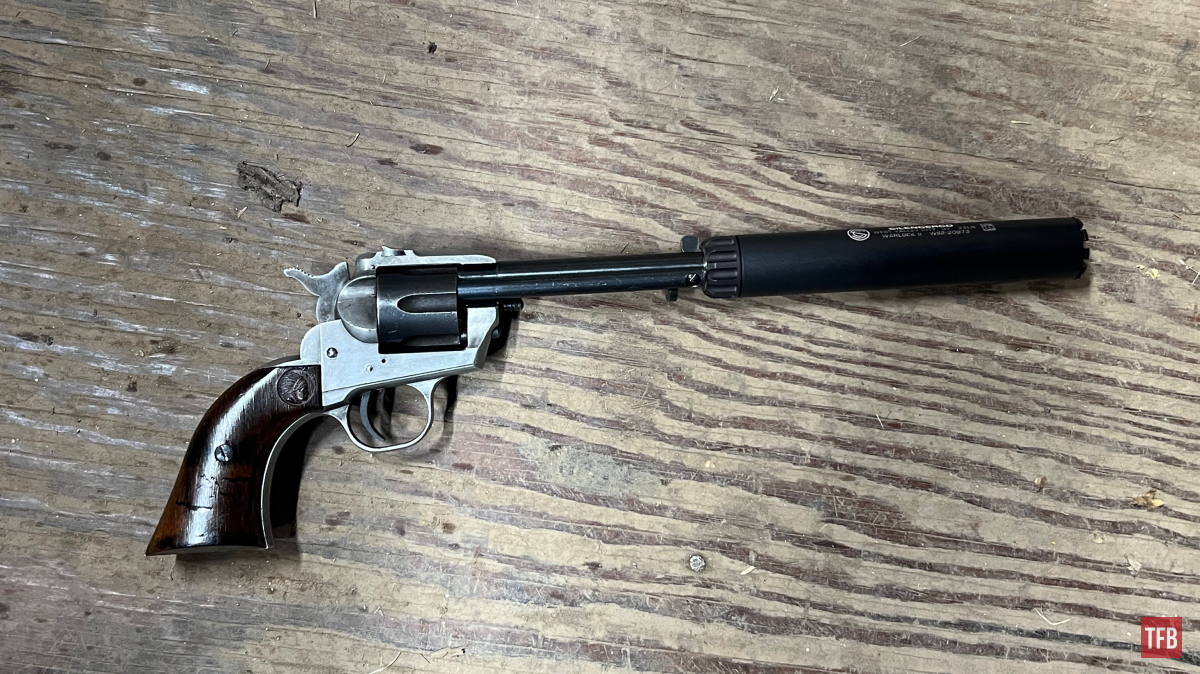
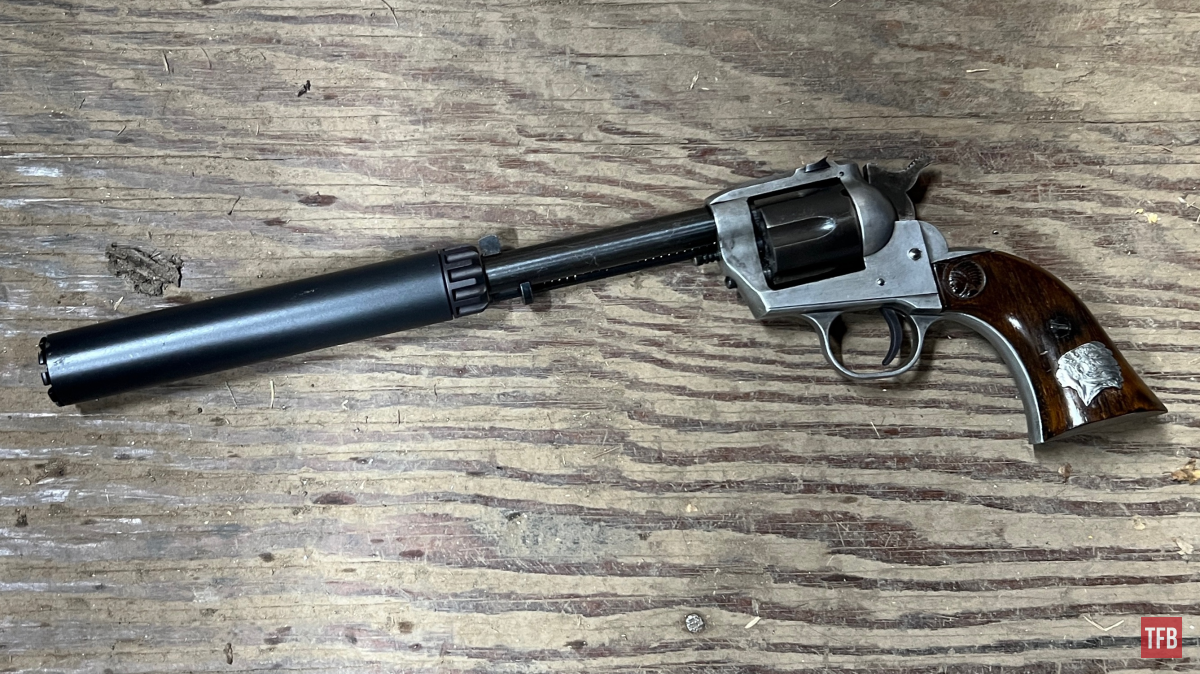
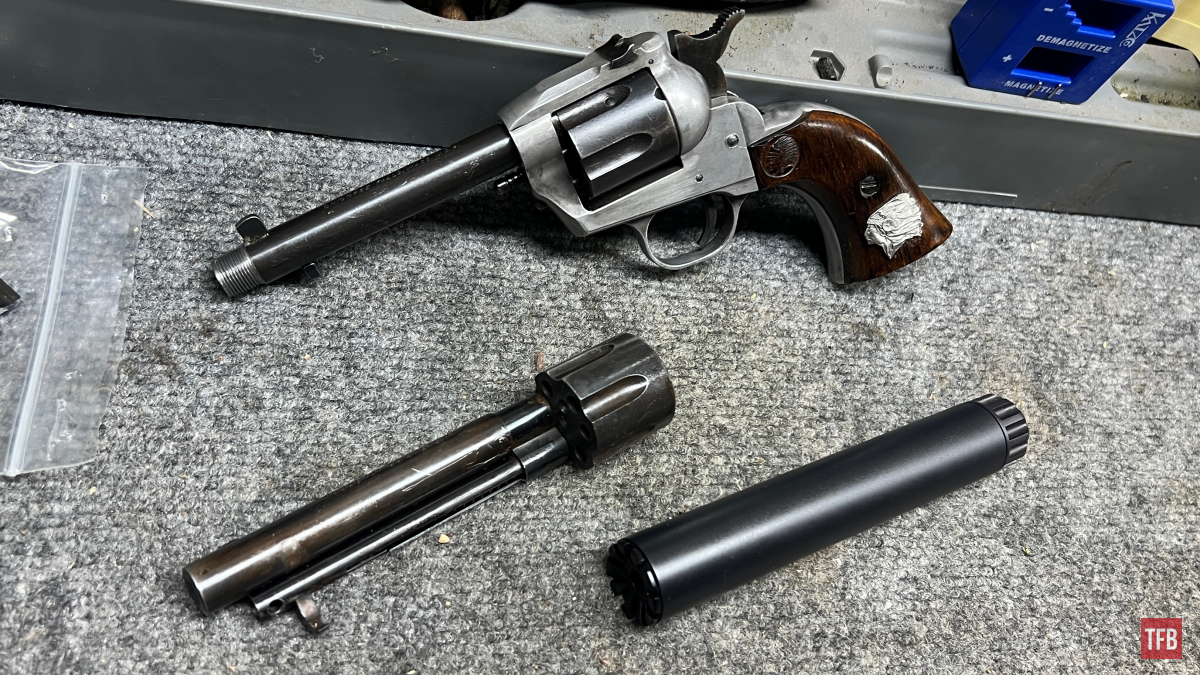
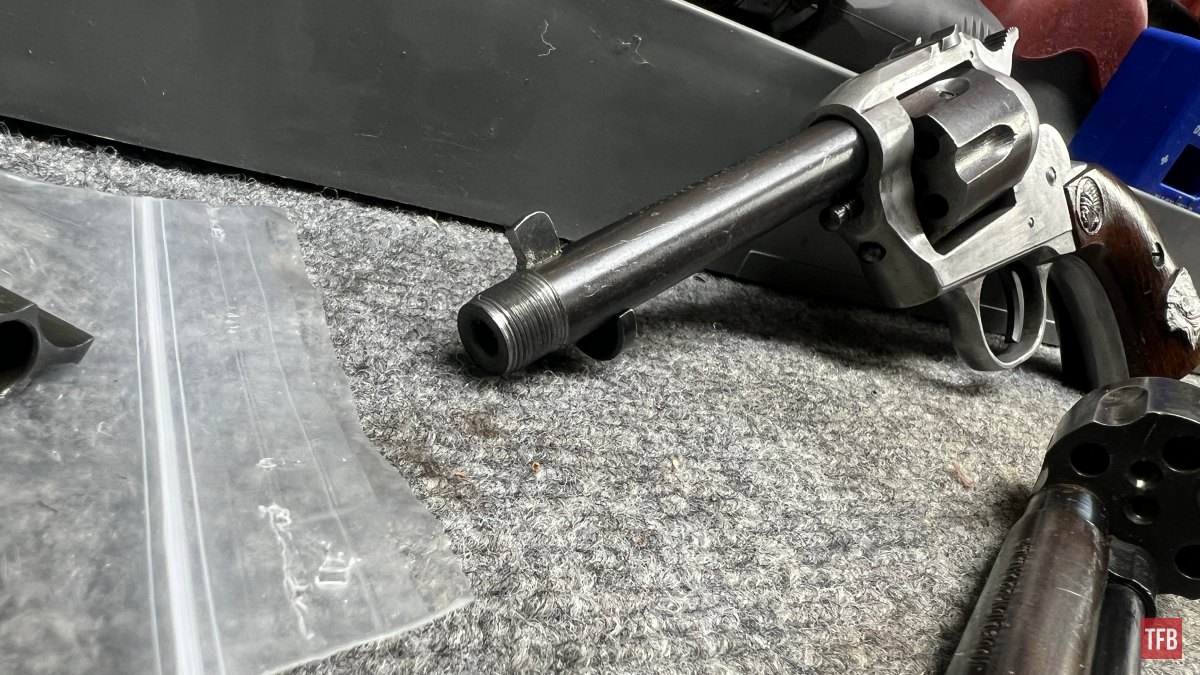
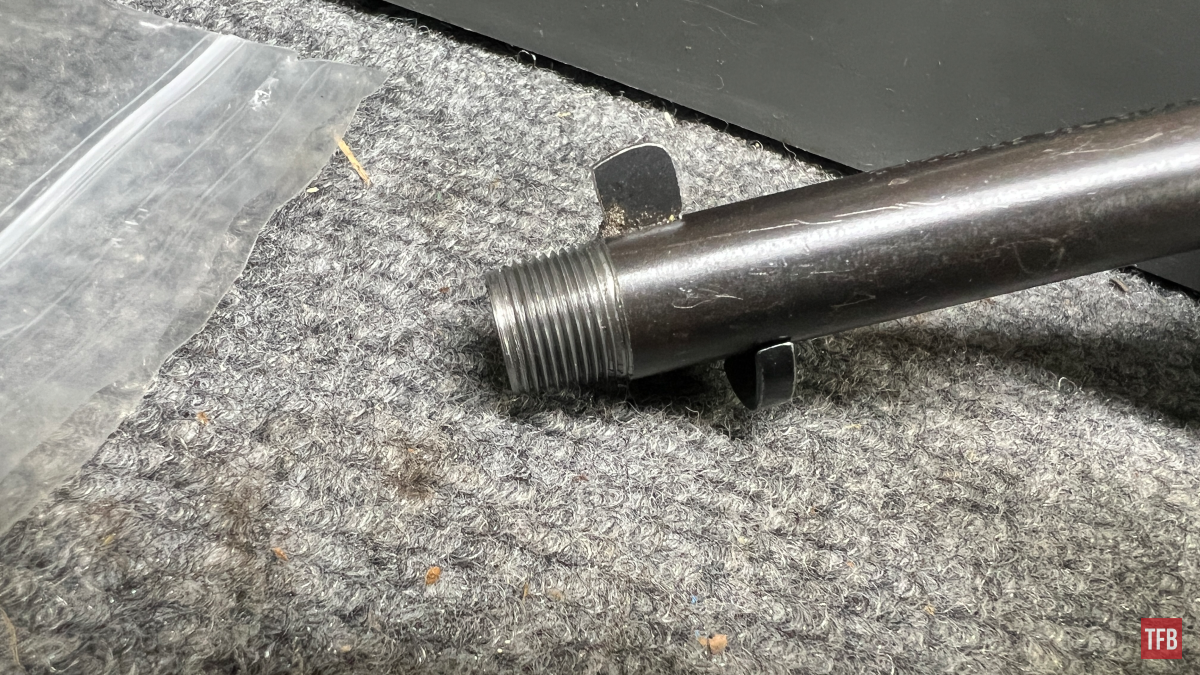
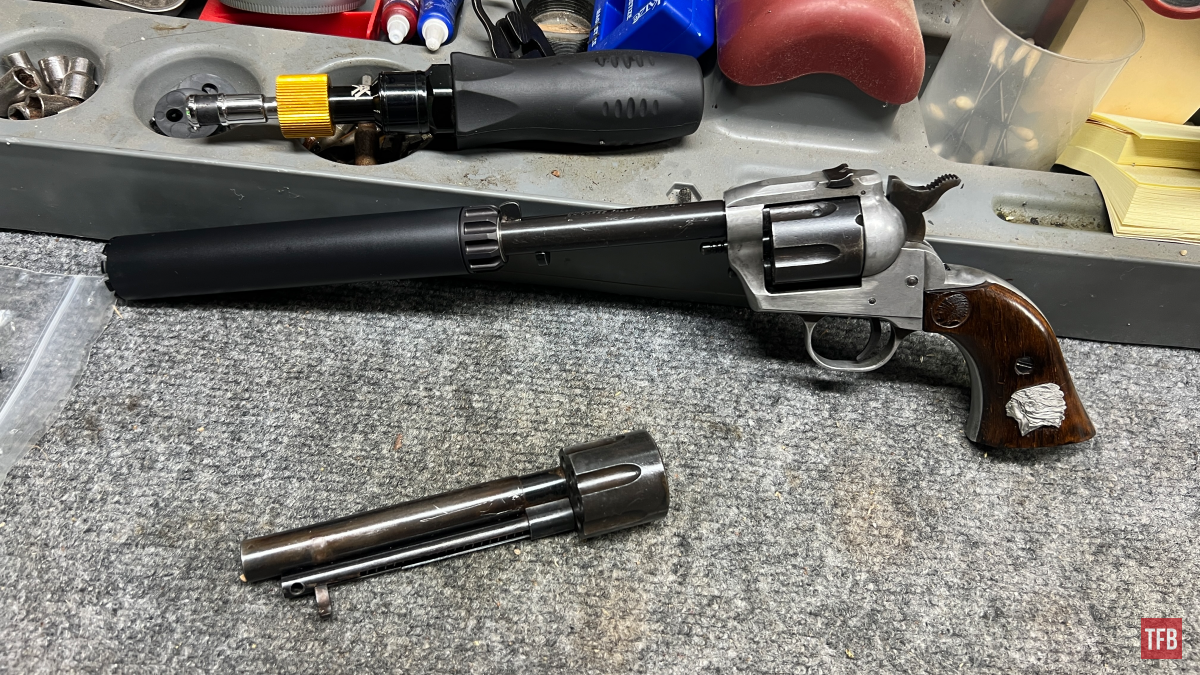
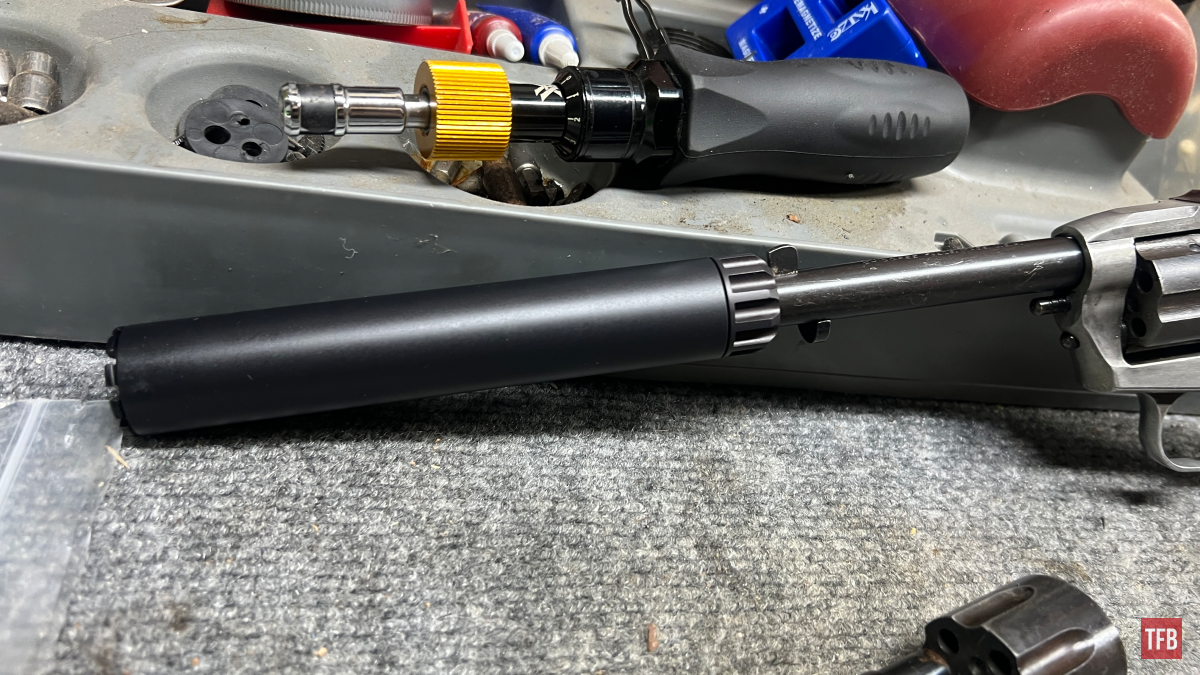
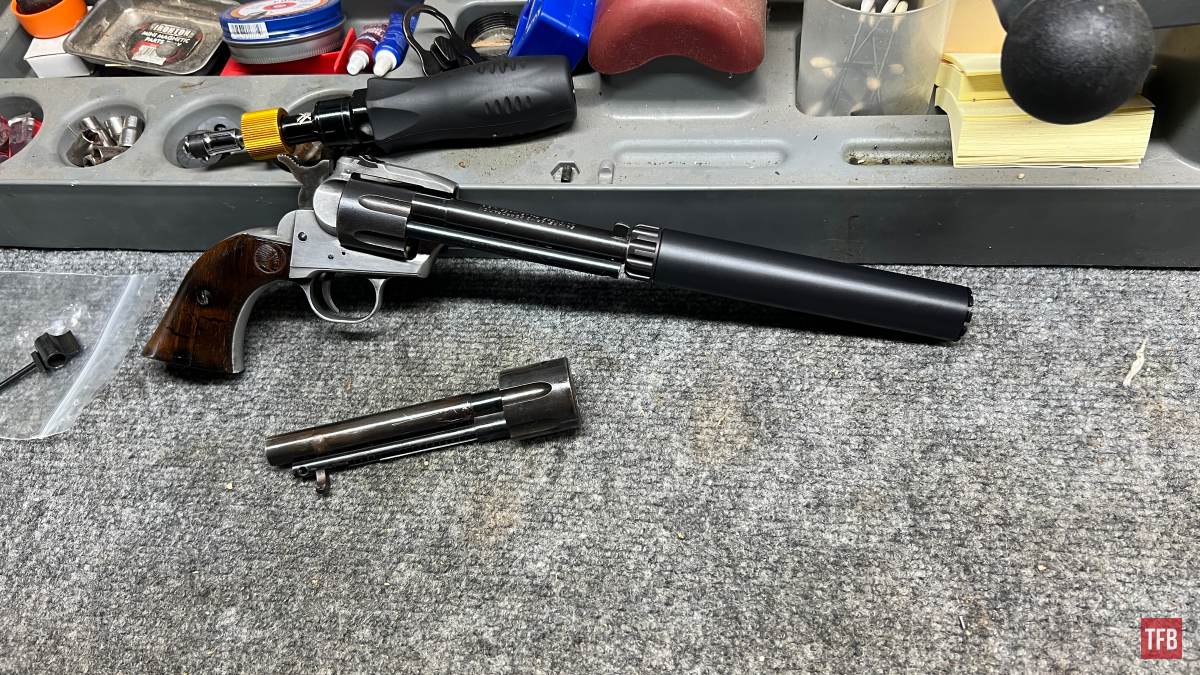
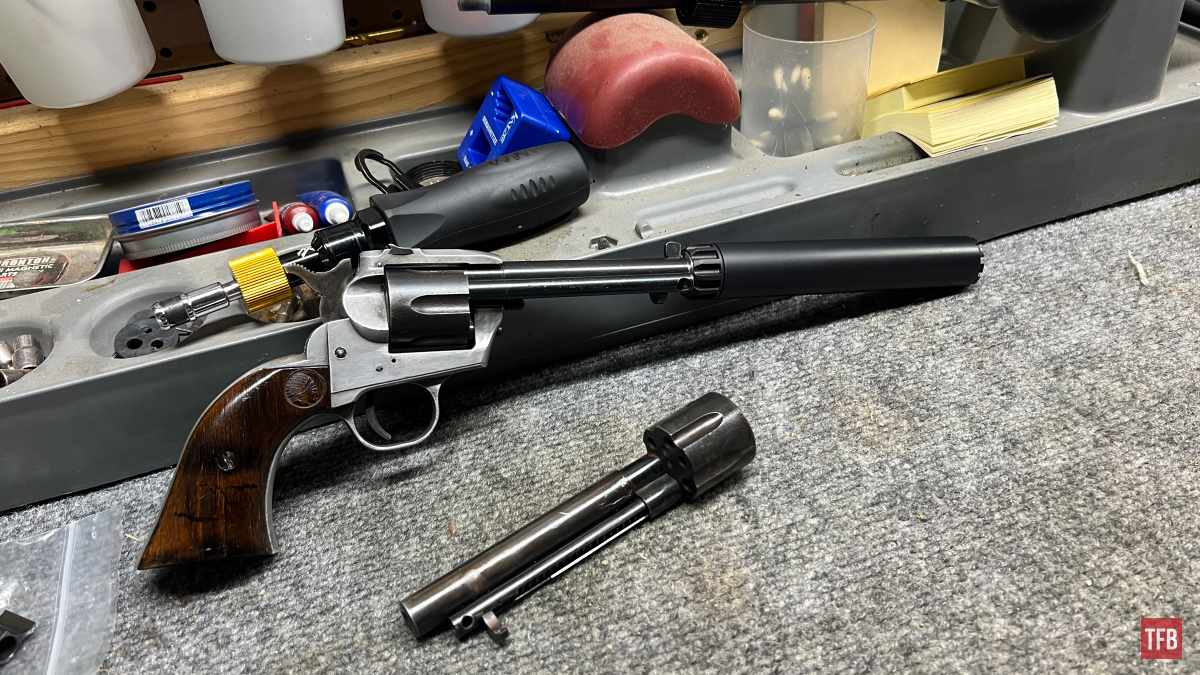
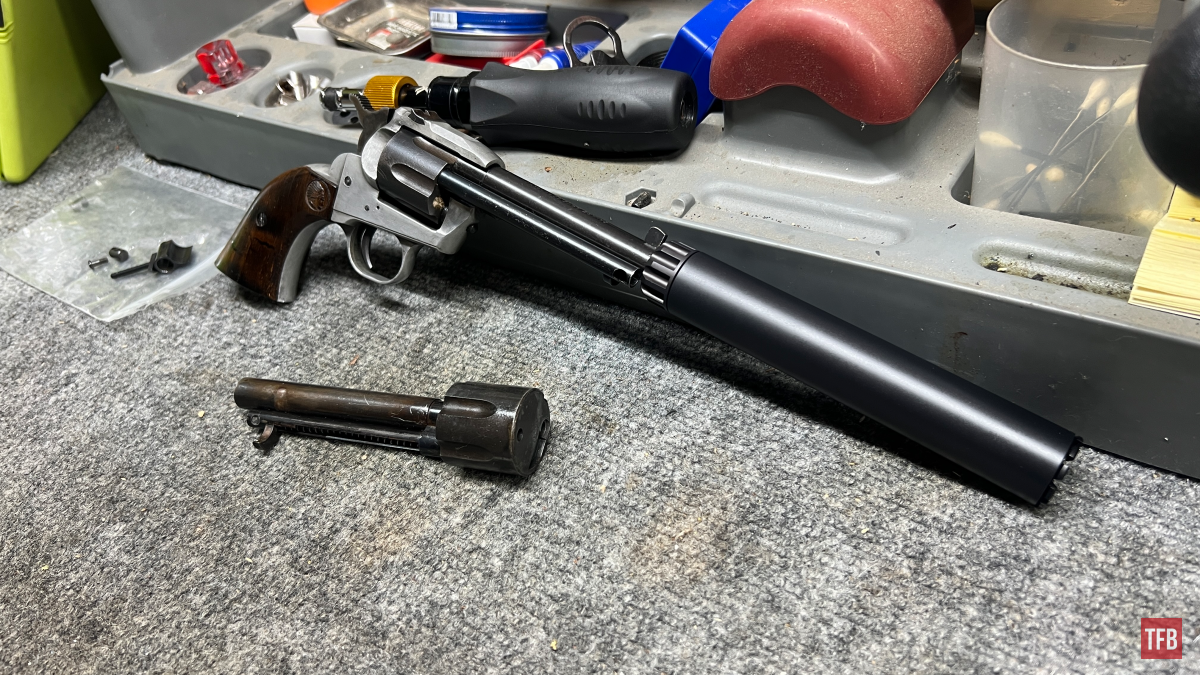
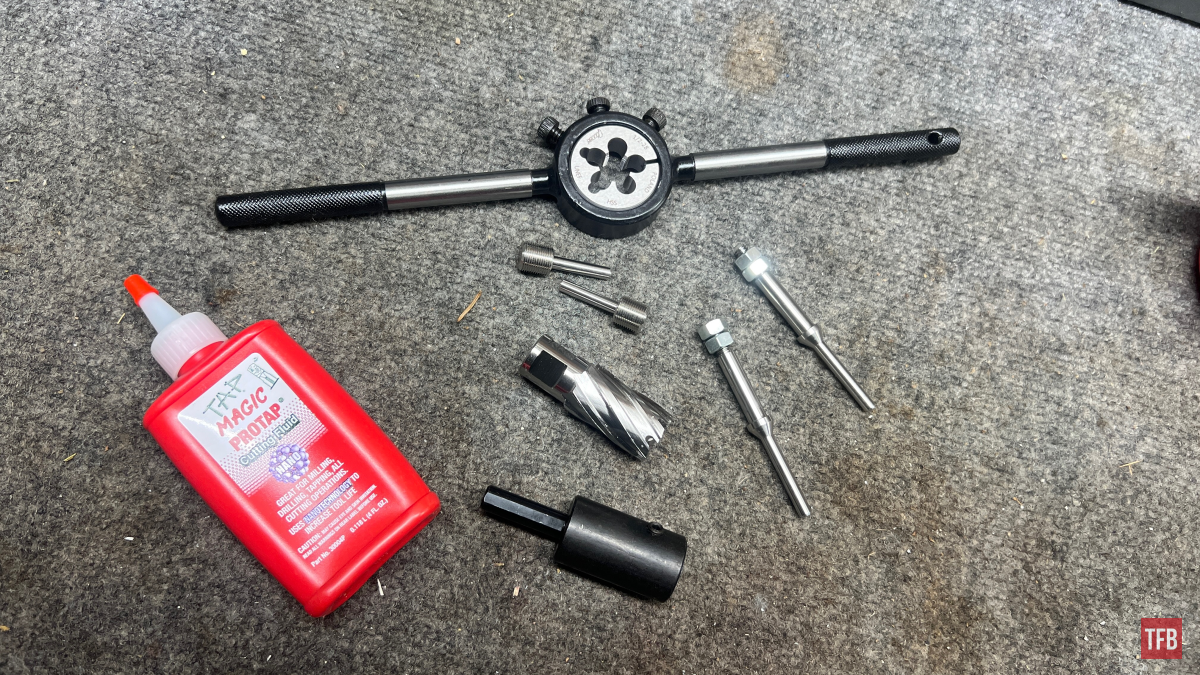
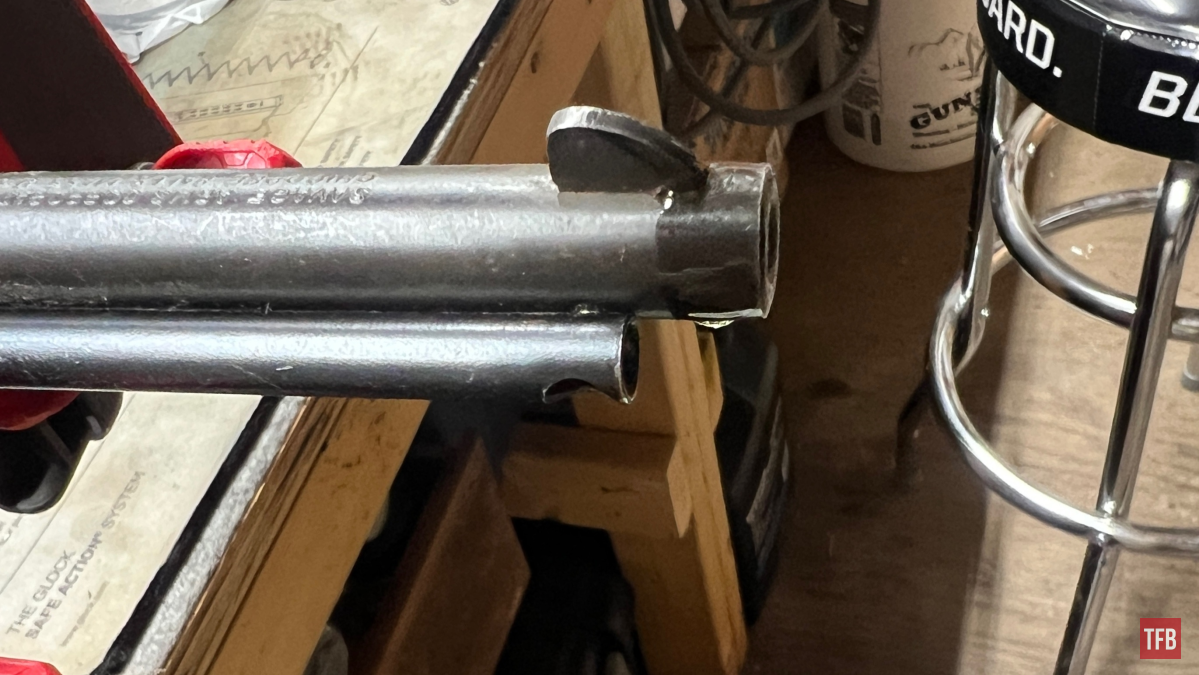
 Your Privacy Choices
Your Privacy Choices